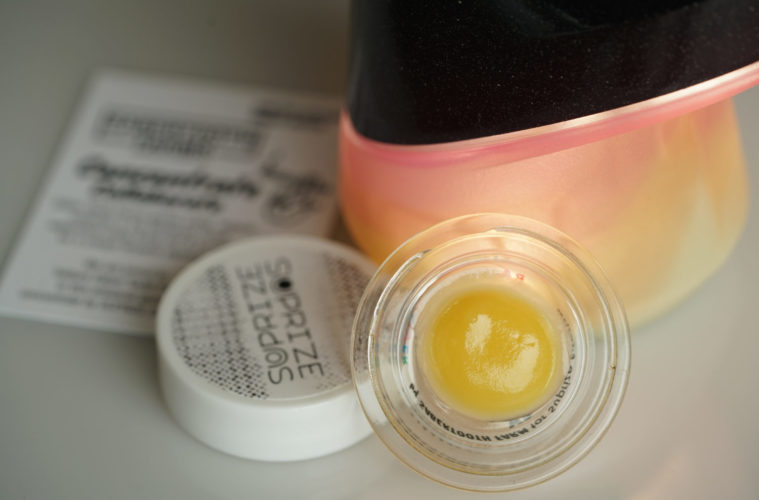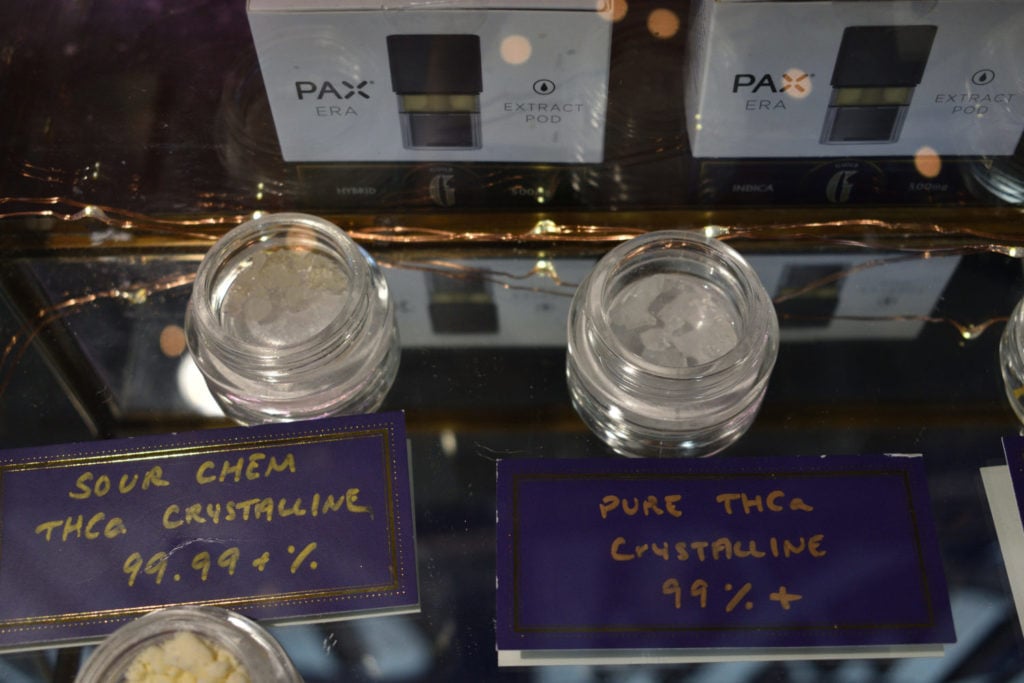L.A. Weekly wants you to be as informed as possible when buying cannabis concentrates, so we put together some of the most common terminologies you’ll hear in the hash world these days in honor of 7/10.
As the holiday approaches, there are so many cool words about dabs that probably fly over your head and that’s OK! We’re here to help shed some light on what all these exciting words used to describe the world’s best concentrates and the things that pretend to be.
First off is 7/10 itself, the reason we’re celebrating. We reached out to Task Rok of Highly Educated to break it down for the rest of us. In addition to providing that early generation of dabbers with the move to titanium and then electronic nails that didn’t need a torch, Rok is also credited as one of the people at the table when 7/10 was thought up as an idea.
“The simple definition is its OIL rotated 180 degrees,” Rok told L.A. Weekly in an email. “The longer definition is that it symbolized a transition, a movement per se. It was a time in the scene where many experienced stoners were having to re-educate themselves. Your bong was being replaced with a rig, your bowl was being replaced with a nail, your weed was being replaced with this translucent goo or amber glass, even your lighter was being replaced with a big ass torch.”
Rok believes in those moments everything about hash oil felt so new, so intriguing, and so innovative when compared to the archaic smoking methods of past.
“So it felt weird to take dabs at 4:20, everybody knows that was the time you were supposed to smoke a bowl or a joint/blunt at,” Rock said. “Since everything else was new, why not get a new time and a new date to celebrate this great transition? 7/10 fit perfectly not only as a symbol of that movement but it was also conveniently timed for when most people are either off work or just getting ready for it.”
Rok believes to this day both the a.m. and p.m. editions of 7:10 are perfect times for a dab. He also argued one of the downsides of 4/20 only has one day it is celebrated on April 20.
“Whereas 7/10 is both celebrated on July 10 in the United States and October 7 for the rest of the world who use the DD/MM/YYYY format,” Rok explained, “the October 7 date can be recognized in the U.S. to avoid having to throw hash festivals outdoors in mid-July. “
This year marks the ninth anniversary of the first 7/10 party.
But once you get past the history, the world of hash at this moment only gets more complex. We asked some of the folks at the top of the concentrate mountain how they would explain some of these terms to their grandparents.
Rosin
The current reigning Emerald Cup Rosin champions at Kayla Extracts know plenty when it comes to great terpenes. They swept the podium last year in collaborations with Sours, Monterey Kush Co. and Dancing Dog Ranch, and took another spot in the top 10.
They said, “Rosin is a form of hash usually consumed by dabbing. This is created by taking cannabis material and pressing it under high pressure and low heat to excrete any available cannabinoids.”
One of the things that makes rosin so great is the preparations that go into the best materials. People will have wild permaculture setups that produce crazy terpene profiles and flavors. Then they chop it down and freeze it to preserve all those flavors. Frozen nugs next get turned into ice water hash in a mechanical or manual separation process. So something similar to a Maytag upright but designed to make hash, or just a regular Maytag not designed to make hash, or a stick. The resulting hash is what eventually gets pressed into the rosin and it’s awesome.
Sauce
For further insight into the boss sauce, we talked with the winner of L.A. Weekly’s Desert Smoke-off, Field of Field Extracts. “It’s like a terp soup. It’s a blend of two different parts. The THC and Terpenes It makes like a slurry of terps and THC,” he told the Weekly.
Field has been on the frontlines of elite hash for years. He felt like sauce really started to take off in 2014. In the years since he’s become one of the biggest names in the game of closed-loop hydrocarbon extractions.
Sauce has become a lot more accessible, mainly because Raw Garden was able to undercut the top shelf with solid B+ list sauce, and in the process they forced many A-listers to drop their price. Raw Garden’s quality was good enough to make you question spending an extra 50 percent on dabs that certainly weren’t 50 percent better.
Badder
The debate about what we call badder these days has led us to deeper talk with Royal Key Organics founder Josh. “If I told my mom, hey I made this new resin consistency and it’s like cake batter, she would know exactly what I mean,” Josh told us. “Except by most of the industry’s standard, badder is not what my mom would draw in her mind’s eye. Because cake batter you can pour out of the bowl.”
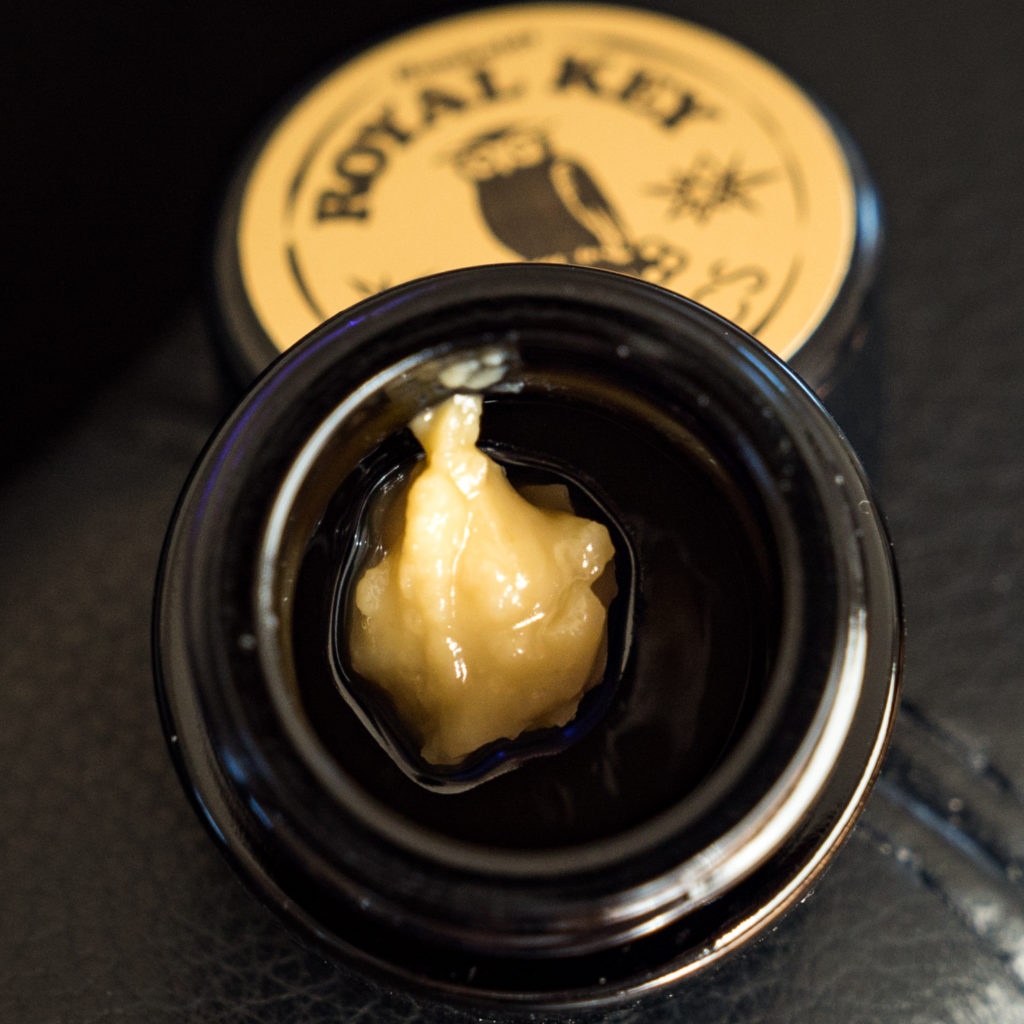
Royal Key Buttercream in 2016.
He said in the industry right now, badder ranges from super dry to a wet glistening cheese curd in the center.
“I would call that more like buttercream frosting,” Josh said speaking on the latter, which is what he started calling his own badders in 2015 because he found it to be more accurate. He said if we’re going to draw parallels in consistency we need to get it right. He added the difference in badder consistency and quality is somewhere between the quality of the material in and post-processing technique.
CRC
Color Remediation Columns sound pretty dope scientifically, but when put in the hands of shady operators they can use it to make trash weed look like pretty dabs. And it’s not me saying this, it’s the guys that sell the equipment!
Luna Technologies notes on their website, “While not the norm, some unscrupulous cannabis producers can run low-grade concentrate through a CRC system to try and polish the extract and lighten its dark hue to pass it off as high-grade dabs. Consumers none the wiser can be duped into buying less-than-ideal extracts. As a result, the extracts end up still tasting harsh and smelling horrible.”
That being said, there certainly is a place in the market to try and help farmers get some kind of value out of their efforts gone awry. But trying to pass it off as flame extracts is definitely not the answer, and many would say unethical.
Distillate
In early 2013, Chris Barone would help plant the seeds of the modern era of distillate with his company The Clear. “Dab culture, oil, was starting to really come up, but most dabs were gross,” Barone told L.A. Weekly. Things like using whole buds to make hash and fresh frozen had not taken off yet outside the most boutique wing of the scene.
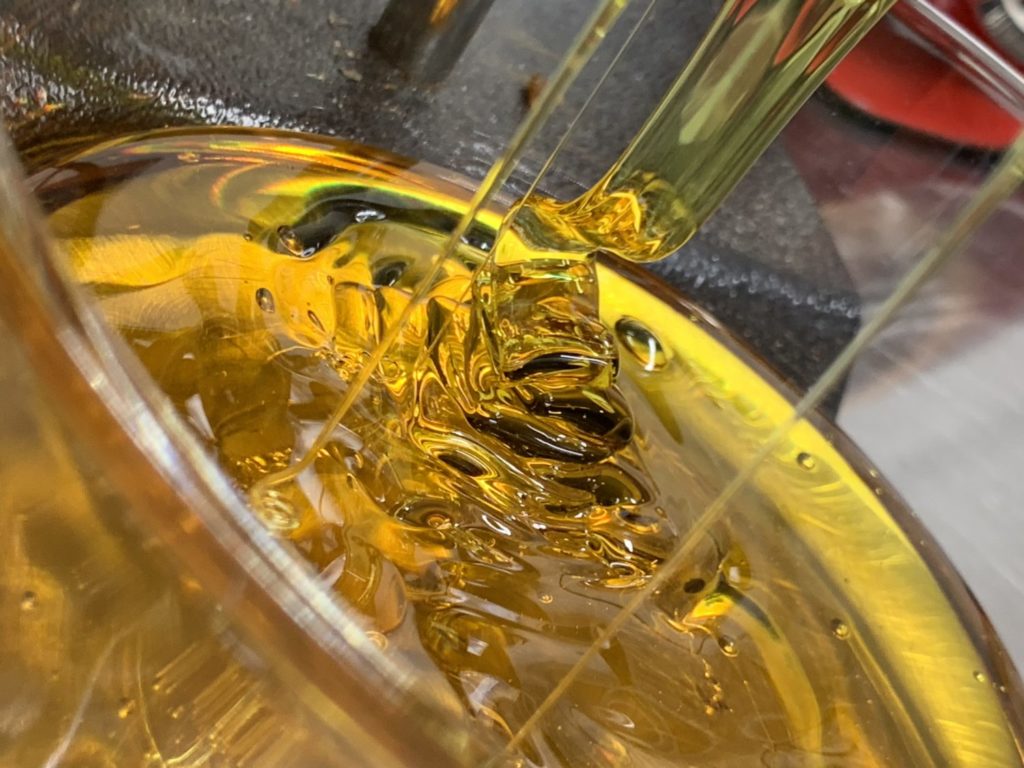
“We saw this oil. It was 80 percent, but even if it was 80 percent it didn’t look that good. So what can we do? Well as a chemist it was a no-brainer, I could obviously distill this stuff,” Barone said, “For the first year nobody knew distillation was the process turning the brown oil into this pristine yellow oil.”
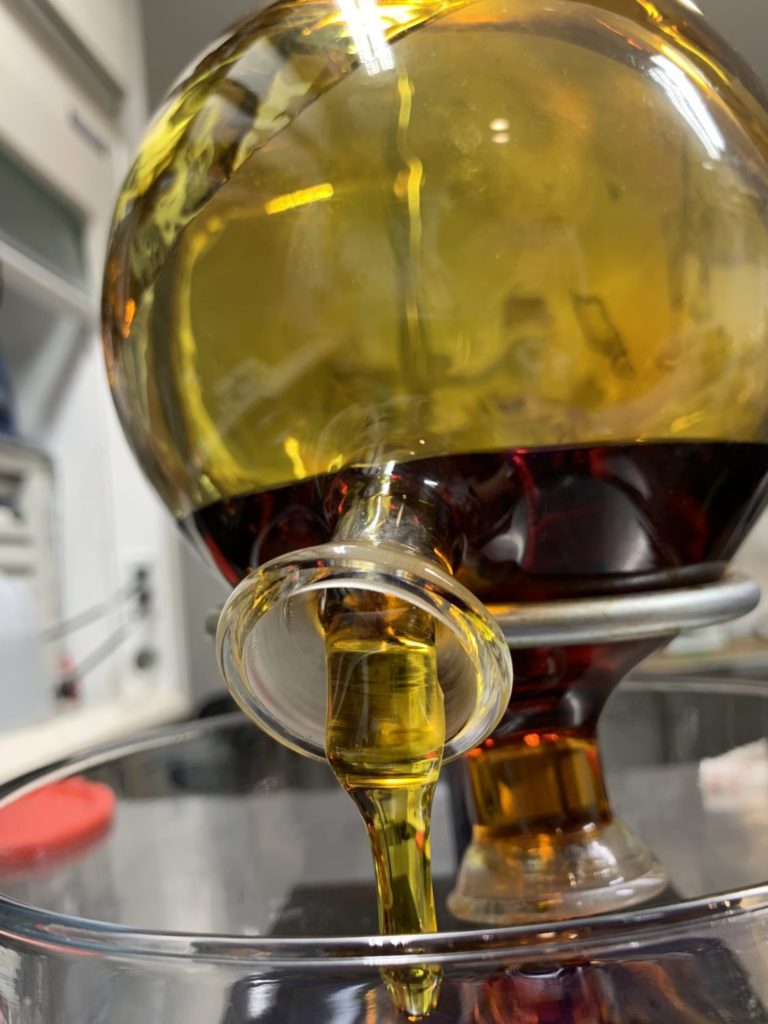
Crude being processed into distillate. Photos courtesy of The Clear.
So from Barone’s view, there is something magic when you can take oil of lower quality and just convert it into high-grade distillate. Eventually, distillate would blow up as a key ingredient in cape cartridges and edibles.
Distillation in itself is not a new process. We asked Barone how long it took to dial it in for cannabis. “Not long, a few weeks,” he replied. “Most of it was just getting used to handling the crude oil,” and the random little pieces of equipment.
Diamonds
Giant THCA diamonds covered in juicy terpenes spent a couple of years at the top of the mountain, but the legal market was never able to compare to what was being produced underground.
One of the biggest concentrate producers in Colorado once told me the threat of the glass exploding prevented the legal cannabis industry from using the techniques needed to make the biggest diamonds. But the underground market could care less about exploding mason jars.
This has created an underground hash economy where jars of the finest Wook Diamonds can run into the thousands of dollars for a relatively small jar. It seems like the highest end of the market is less diamond heavy than it once was a few years back, but there is still plenty to go around.
Mids
Glassblower Chris Hanson serves as a judge for the Emerald Cup’s BHO categories this year. You can’t understand the most elite dabs without being able to wrap your head around the entire marketplace. We asked Hanson to break down what mids really look like.
“Mids is the term given to any cannabis that is generic in the cultivar and/or quality. The mids scale changes from state to state and region to region. Some areas don’t consider cultivar as part of the mids scale, because they can’t,” Hanson told L.A. Weekly.
Hanson believes that in California, if it isn’t an exotic cultivar and quality, it’s mids.
“Now there is a fire mids category in the area the discerns that the cannabis is of high quality, just not an exotic strain. For example, Gorilla Glue is mids, but if its really nice Gorilla Glue it’s fire mids. But you can also have some Runtz that didn’t turn out very frosty, no nose and poor structure, that’s mids too,” he elaborated.
Hanson closed by simplifying mids to any cannabis that doesn’t make your eyes open a little wider, make you want to go back for a second smell, and leave you in awe just a little bit extra.
Advertising disclosure: We may receive compensation for some of the links in our stories. Thank you for supporting LA Weekly and our advertisers.

